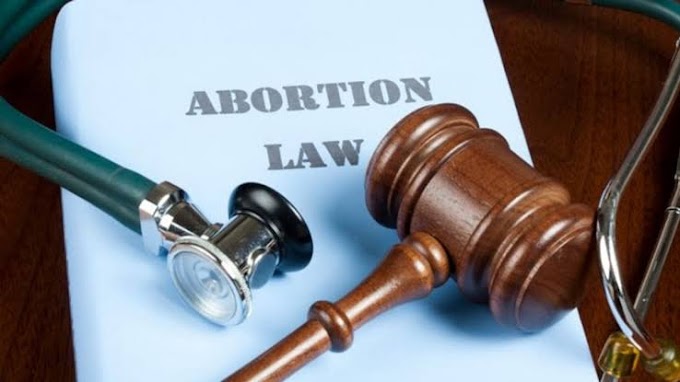Ineffectiveness of Criminal Remedy in Trademark Infringement
Trade dress (“TD”) is the multifaceted component of a good, that is the overall layout of the product, including its configuration or form, or the ‘get up’ of a product. The unauthorised use of a brand or service mark (Trade dress) is referred to as trademark infringement. This usage may be in relation to services or products and may cause confusion, deceit. or misunderstanding about the actual firm from which a product or service was obtained. When there is an infringement there are essentially two remedies that the (“TM”) owner can avail; criminal and civil and these remedies are nearly the same all across the world, i.e.- USA & India. This article would assess how the criminal remedy is ineffective in the context of India and USA. The paper will analyse the intention of the statue to include criminal remedy in a civil oriented legislation and how it fails to give effect. Additionally, the paper will highlight the inconsistencies (procedural) in the TM, Act 1999 of India, and the reasons for ineffectiveness of criminal remedy.
USA
Firstly, the remedies of TM infringement are rooted in economic contours as the laws of TM are to ensure there is no infringement of the Intellectual Property, and the owner of the registered TM can enjoy economic and the other benefits, i.e., Fame and good will. However, in India and USA both have criminal remedies. The question arises, what is the reason to insert a criminal provision in a civil oriented legislature. Criminal penalties are frequently required to guarantee adequate punishment and deter infringement. ‘The Trademark Counterfeiting Act (“TCA”) was meant to increase the penalty for counterfeiting, but only in circumstances of exceptionally serious behaviour of Infringement. The Congress and the Courts have played an active role in broadening the spectrum of conduct that is punishable under the TCA’.Similarly, Article 61 of the TRIPS suggests that IP infringements such as counterfeiting and piracy are designated as crimes, with deterrence as the primary goal of criminal sanctions. The variable would mean, an infringement which is ‘extremely serious/ grave’, can enable criminal liability. The legislation does not cover what is serious or not in terms of infringement hence, the understanding is developed by judicial interpretation and international agreements. In R vs Johnstone, the judges have taken the ground of ‘Public Interest/ Welfare’ as a basis for imposing criminal liability; a serious infringement. Only via ‘Sec- 92(3)’ of the TM, Act 1994, if the defendant can demonstrate that he reasonably believed that using the symbol in the way he originally intended, was not intended to infringe the TM, he can avoid criminal punishment. This suggest that the legislature has left a very narrow scope for asserting criminal liability as the other sub clauses of Sec- 92 do not require mens rea. In my view, to claim a relief, where just by proving that the action to infringe was not actually intended to infringe, a defendant can quite easily be saved from criminal conviction, this for me seems ineffective remedy. A criminal offence must be viewed as an entity distinct from a civil offence because they are principally different; ‘actus rea and mens rea’. Here in a civil legislature, where a criminal liability may be imposed, the scope is extremely narrow and impractical. This according to me vitiates the whole purpose of the section. The prosecutor would have a lot of difficulty in proving that the defendant intentionally infringed, and as the prosecutor, the burden of proof lies with him to prove that the act was intentional. Hence, an ineffective remedy.
INDIA
In the cases of pharmaceutical infringement, there are chances that there is confusion among the common public, hence making criminal remedy a plausible option. In Ranbaxy Laboratories Limited vs V. Anand Prasad, it was held that, the parties do share a suffix (phonetically similar name) and are rival products in the same pharmaceutical business. Hence the public confusion and deception could have serious repercussions, the courts have accurately applied the test of ‘imperfect recollection’. Sec-13 of the TM Act 1999, restricts trademarks based on chemical names. However, due to the number of such cases where companies register TM with confusingly similar name, even when it is prohibited by the law, it would be extremely difficult to prove beyond reasonable dought, by the prosecutor, that the act was done intentionally by the defendant. This again would nullify the purpose and applicability of criminal liability, as inferred from the judicial interpretation, in proving intention (mens rea).
The procedure for a seeking a criminal remedy is similarly ineffective. The procedure to initiate a criminal remedy begins with a complaint to the police as an FIR or to the Judicial Magistrate. To raid and seize the infringing products a police office at a level of Deputy Superintendent of Police can only execute the raid after the opinion of the Registrar of TM. This is an essential part of the procedure and cannot be set aside. Further, there is no time limit prescribed for the registrar and to give the report and it could take days before the report is received and the raid executed. However, the Parliamentarian Report suggests that the time limit ought to be Forty-Eight hours for the registrar office to give the opinion. The suggestion of the committee seems to be impractical as an opinion by the registrar has to be of a meticulous and detailed nature. This is due to the criminal aspect of the section and forty-eight hours seems inapplicable. Further, the investigation requires resources and a group of people to execute the raid which in itself is a time taking and tedious task. Furthermore, this indicates that the entire process of raid would be defeated due to the tardiness of the registrar and the complexity of criminal procedure. The section and its implications show that a civil remedy would have been a much better route to claim damages, thus making the criminal remedy ineffective. Additionally, the plaintiff naturally suffers from losses or injuries other than pure economic loss, i.e., good will. Criminal remedy cannot return them to their original position likely before the infringement of TM. Its pertinent to mention, it’s an abuse of the court process and spends the government money to trouble the infringer.
To conclude, criminal remedy does not give effect to the object of the sections and is quite cumbersome to prove infringement. Additionally, the procedure of enabling a criminal proceeding is inconsistent with the object of the act for speedy disposal of civil suits and is ineffective.
Author:- Aryamaan K.Shankar




![Freedom of Speech in India [Indian Supreme court and Law of Sedition]](https://blogger.googleusercontent.com/img/a/AVvXsEiGLLUmLKq5Da6xDZplasOZHKRj-jOhWPkoeuy0_Eq757tUpOiHz-xooXwIlAjF0-hmBfi-TtMIv6on_sVgBXVq4wbWwnbsqLOcNX22S8C2aSq-ZuK3vn9wWAx8tXByYOBfwc0hs6b8RJV84YNFG2greouGKjup6g8kN-xVlchW33VHdSSmrhLC1BUEVbGp=w680)





